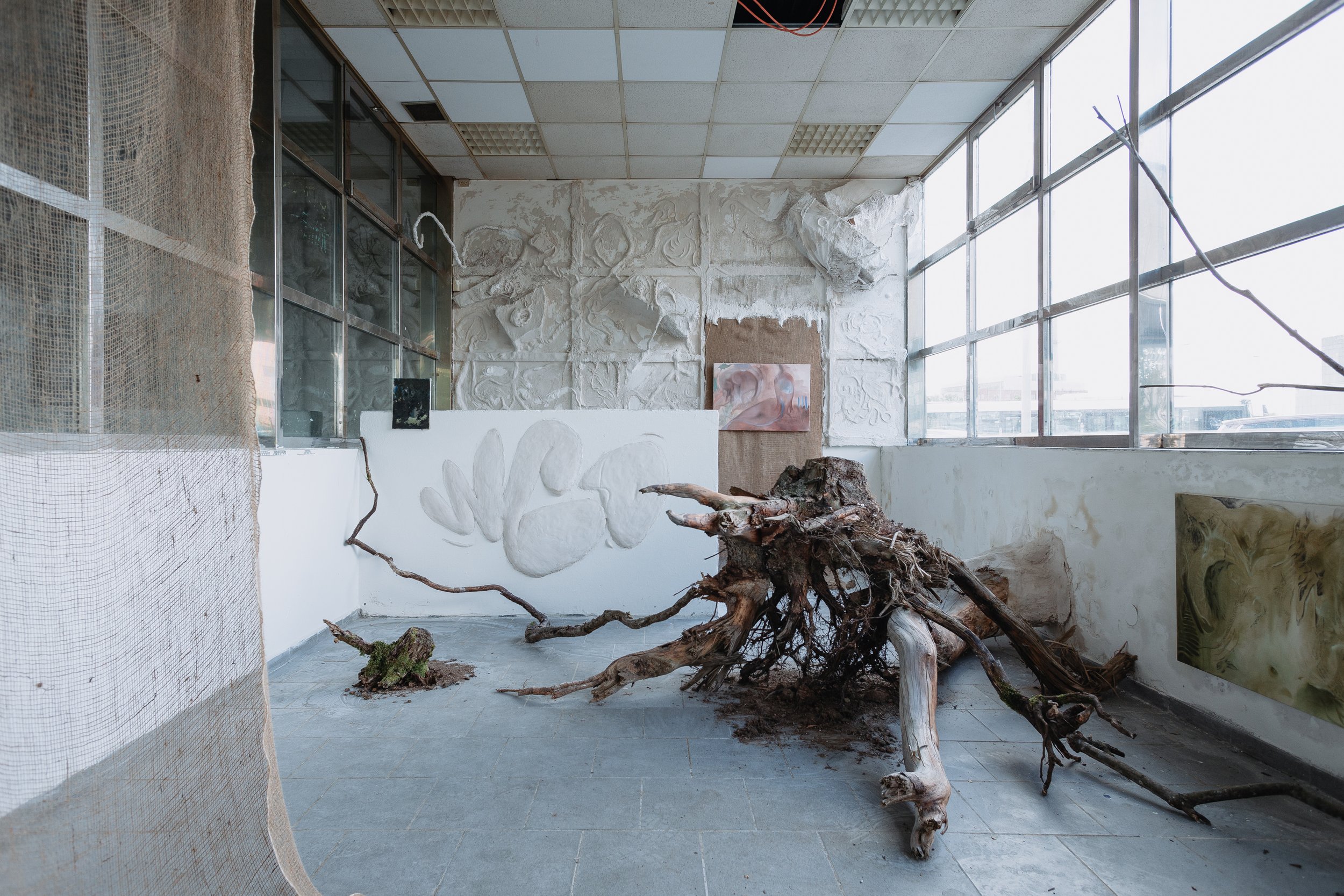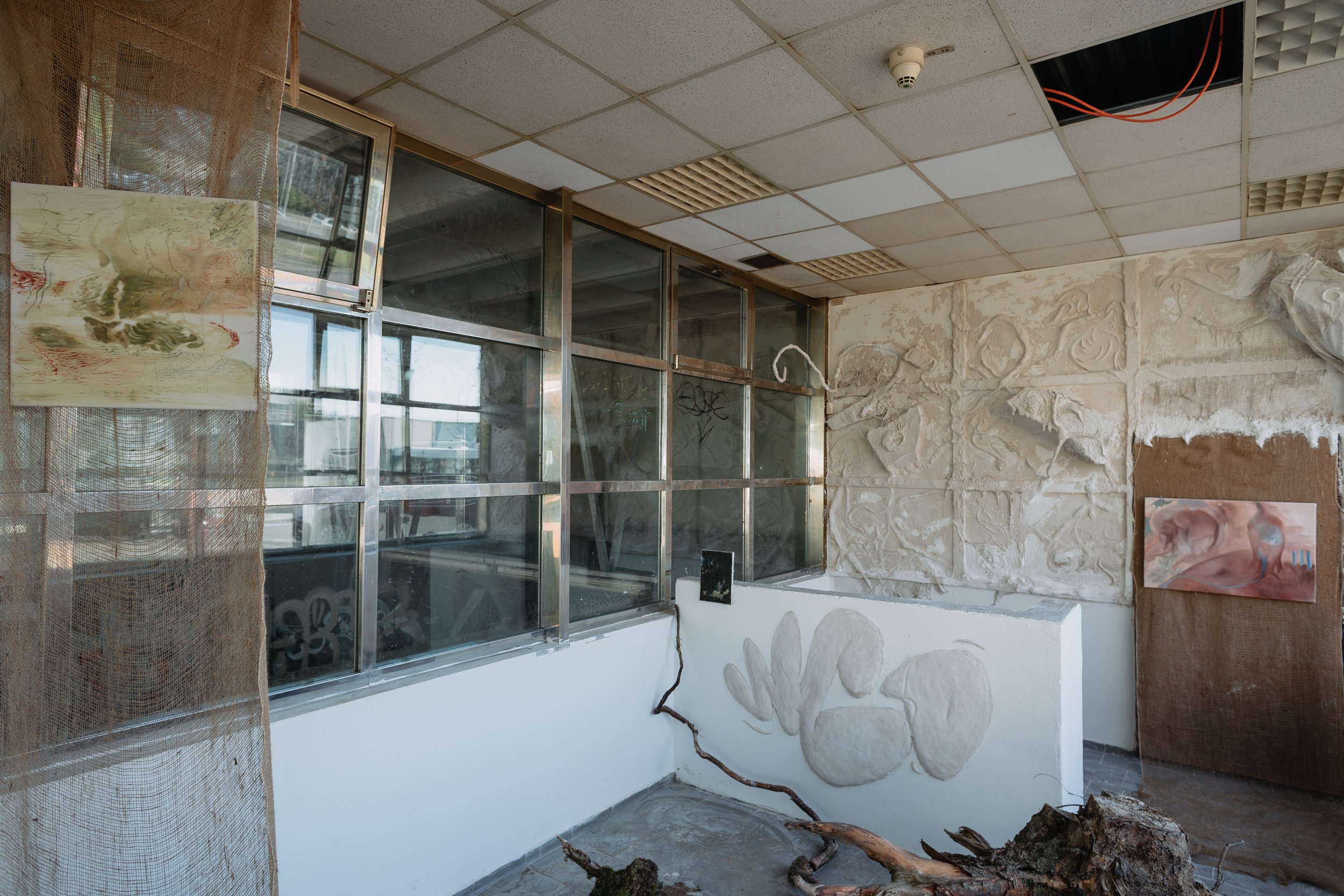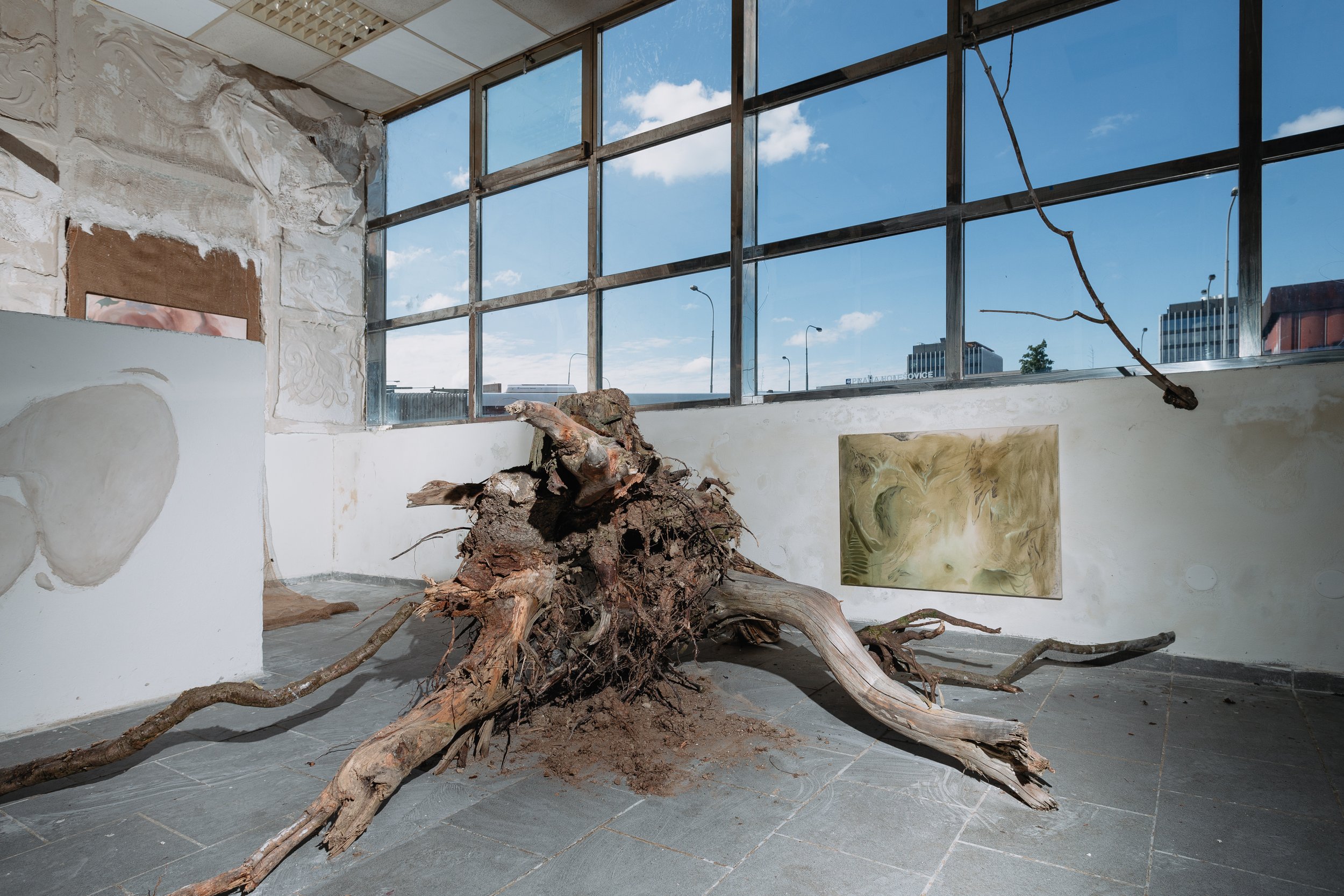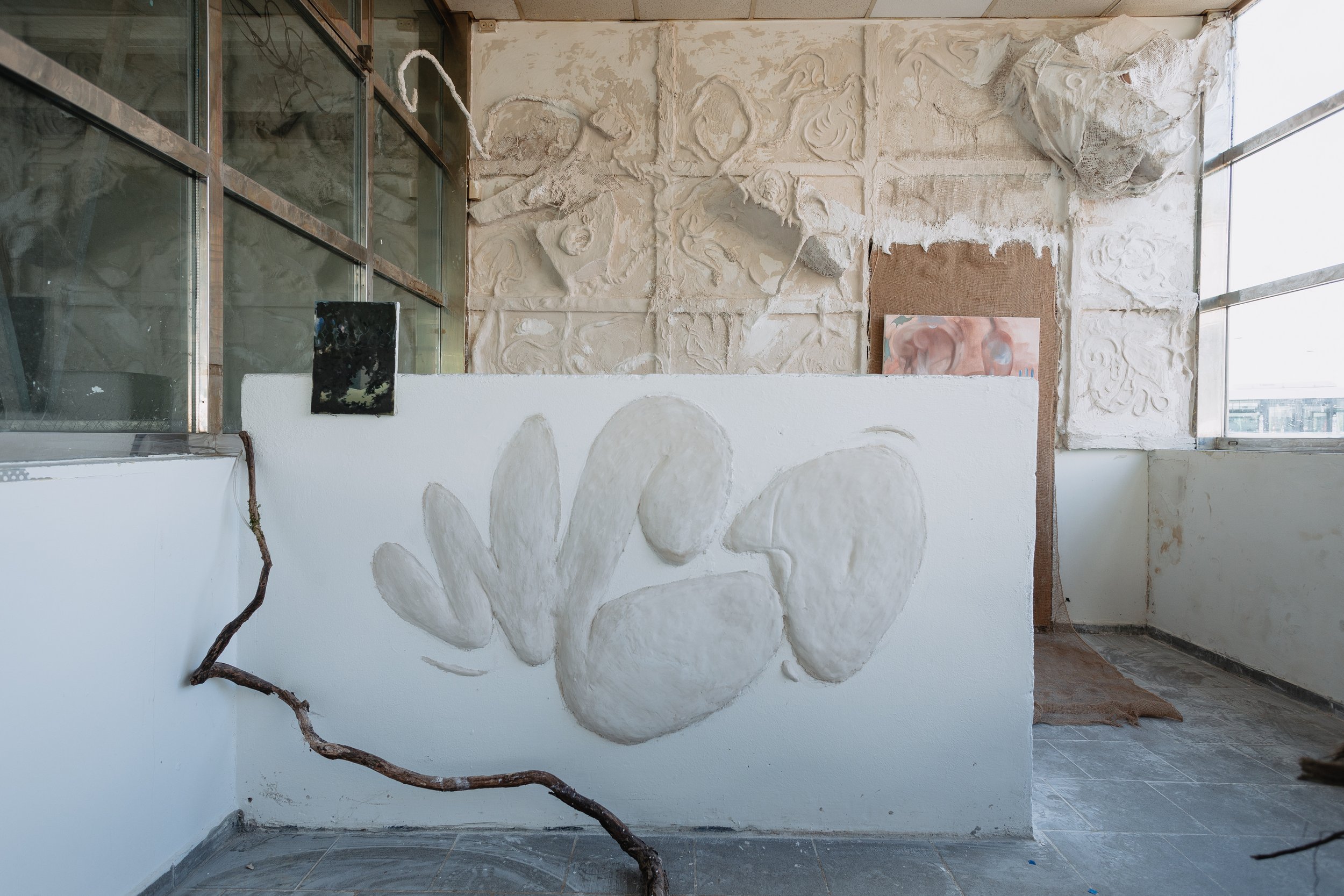Anastasia Ilina, Hana Marhounová, Alex Švígler
Entwined Echoes
HIDDEN UMPRUM
26.3. / 4. 5. 2024
We are delighted to present the 2th exhibition at HIDDEN UMPRUM, featuring students of Academy of Arts, Architecture and Design in Prague, Anastasia Ilina, Hana Marhounová, Alex Švígler
A place is defined as a specific part of space where something or someone can be or where something or someone can belong. The site-specific exhibition Entwined Echoes responds directly to the location around Holešovice station, which seems to belong nowhere. This busy, concrete-covered transport hub serves mostly as a transition from one place to another, perhaps more of a non-place than a space where we would like to spend some time. This location is simply not (yet) important or lucrative enough to invest in or care about in any way. It is neglected and discourages rather than attracts attention.
However, the local community sees this space as a meeting place, a place to interact, spend time together and form their social bonds. Through agreements with the police and shop workers, community members are allowed to remain in the space subject to certain conditions, such as not begging or interacting too much with passers-by. This albeit very limited form of mutual respect allows the community to use Holešovice station as a centre for meeting and shaping the local community. The non-place is suddenly transformed into a stable place to survive.
Previously, the station was surrounded by a forest, which was turned into a royal preserve by King Přemysl Otakar II in the 13th century. The forest served the locals not only as an important natural feature and source of livelihood, but also as a communication network. Despite increasing urbanisation, the site retained its relationship and connection to the surrounding countryside, but it was not until the advent of the Industrial Revolution that a fundamental change occurred. The exhibition Entwined Echoes thus, in a way, restores the site to its original form, but in a rather subversive and reflexive way. Anastasia Ilina, Hana Marhounová and Alex Švígler decided to directly relate to and respond to the present contradictions and paradoxes. Moreover, the absurdity associated with the stereotype of the "privileged" position of art is even more pronounced in the trash environment of the station, which can seem almost slightly out of place here. The artists of the exhibition provide the audience with an opportunity to reflect on how we use, inhabit and perceive the places that surround us. They do not point a clear path, but rather reflect, layer and undermine ironically.
The absurdity mentioned in the preceding lines speaks to the complexity of the character of the site and the interpersonal relationships woven into it. It is impossible to determine with certainty who actually gives this place its identity. Is it the local community? Or is it the passers-by who just want to pass through quickly and, most importantly, not linger? Or is it us who are trying to establish art here? Who knows whether the location of Holešovice station is more of a place or a non-place, who knows where the boundary between the past and the paradoxical present actually is. The gallery "bar" has graffiti inspired by the painting on the red booth next door. A long-lost forest grows out of the wall, its branches and tendrils winding towards us, reminding us of something that was here once upon a time. The ruins of the past in the form of a tree that is no longer among the living speak to us, gradually growing and burrowing into the space. We have two options: to dream and let ourselves be carried away by the breeze of the past, or to enter the forest and not know what awaits us in its bowels, whether we will be able to return from it. The other option is to reflect on the nature of the strange present, which, under the overlay of ever-buying development projects, is at the same time causing greater and greater separation of certain localities and thus entering into the increasingly uncertain tomorrows of us all.
Curator: Helena Todorová




